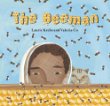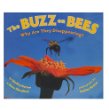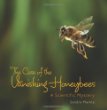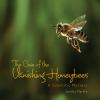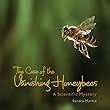-
-
By Twist, Clint2006., Juvenile, Gareth Stevens Pub. Call No: 595.79 TWIST Edition: North American ed. Availability:1 of 1 At Location(s)
-
-
1993., Juvenile, Rourke Publications Call No: 595.79 Availability:1 of 1 At Location(s) Series Title: InsectsSummary Note: This book is an introduction to the most common species of honeybee.
-
-
By Twist, Clint2006., G. Stevens Pub. Call No: LS 595.79 Twi Edition: North American ed. Availability:1 of 1 At Location(s) Series Title: Nature's minibeastsSummary Note: Explains what honeybees are, examines the anatomy of these busy insects, and describes the behaviors of honeybees as individuals and as colonies. Includes a look at additional types of bees.
-
-
[2020]., Primary, National Geographic Call No: LANGUAGE NF MAR Availability:0 of 2 At Location(s) Series Title: National Geographic kids readers.Summary Note: Text and illustrations introduce young readers to honeybees.
-
-
-- Africanized honeybee versus army ant[2019]., Gareth Stevens Publishing Call No: 595.79 9 Availability:1 of 1 At Location(s) Summary Note: Africanized honeybees, also known as killer bees, and army ants are both tiny animals that really strike fear in many people. In this action-packed volume, readers will follow along with a battle of the insects and decide who they think would be the ultimate victor. Readers will learn about factors such as adaptations, size, and sting. They'll use the information to make an educated guess about which insect they think would win if such a battle were to really break out. This imaginative, high-interest book is loaded with eye-catching graphics and facts that support important elementary science concepts.
-
-
-- What a pair!2005, Preschool, Candlewick Press Call No: [E] Edition: 1st ed. Availability:1 of 1 At Location(s) Summary Note: Ant and Honey Bee try to come up with original outfits for a costume party and almost experience disaster.
-
-
-- What a pair!2005., Preschool, Candlewick Press Call No: [E] Edition: 1st ed. Availability:1 of 1 At Location(s) Summary Note: Ant and Honey Bee try to come up with original outfits for a costume party and almost experience disaster.
-
-
-- Bee man2009., Primary, Barefoot Books Call No: E KRE Edition: Pbk. ed. Availability:1 of 1 At Location(s) Summary Note: In rhyming text, a child describes the work Grandpa does to take care of honeybees and harvest the honey they make.
-
-
-- Bees in your backyardc2004., Picture Window Books Call No: 595.79 9 Availability:1 of 1 At Location(s) Series Title: Backyard bugsSummary Note: Describes the physical characteristics, life cycle, and behavior of honeybees.
-
-
1995., Primary, Children's Press Call No: ENF 595.79 9 Availability:1 of 1 At Location(s) Series Title: Rookie read-about scienceSummary Note: Introduces the honeybee including how they live, where they find their food, their importance in pollination of plants, and the making of honey.
-
-
c2010, Primary, Holiday House Call No: [E] Edition: 1st ed. Availability:1 of 1 At Location(s) Summary Note: Examines possible causes for the disappearance of bees, discusses how the loss of bees can affect food and clothing, and explains how scientists are trying to solve the mystery.
-
-
[2014], Millbrook Press Call No: 595.79 9 Availability:1 of 1 At Location(s)View cover image provided by Mackin Summary Note: Investigates the mysterious Colony Collapse Disorder (CCD) that is killing honeybees each year. Discusses what could be causing the disorder, its impact on humans, and the future of honeybees. Includes an author's note, color photographs, facts about honeybees, a glossary, tips for helping your local honeybees, and resources.
-
-
2014., Juvenile, Millbrook Press Call No: 595.79 MARKLE Availability:1 of 1 At Location(s) Summary Note: Investigates the mysterious Colony Collapse Disorder (CCD) that is killing honeybees each year. Discusses what could be causing the disorder, its impact on humans, and the future of honeybees. Includes an author's note, color photographs, facts about honeybees, a glossary, tips for helping your local honeybees, and resources.
-
-
-- Vanishing honeybees[2014]., Pre-adolescent, Millbrook Press Call No: ANIMALS NF MAR Availability:1 of 1 At Location(s) Summary Note: Examines why the honeybee population is decreasing and discusses how scientists and beekeepers are working to answer this question.
-
-
-- Vanishing honeybees[2014], Millbrook Press Call No: 595.79 9 Availability:1 of 1 At Location(s) Summary Note: Examines why the honeybee population is decreasing and discusses how scientists and beekeepers are working to answer this question.
-
-
2013., Juvenile, Candlewick Press Call No: 595 BEES AND WASPS HUB Edition: First U.S. edition. Availability:1 of 1 At Location(s) Summary Note: Follows a scout honey bee on her very first trip out of the hive on a golden fall day. She is on a quest to find nectar and to share the location of that find with the rest of the bees. Describes how she uses landmarks to guide her way, her sense of smell to locate the flowers, and how she has to avoid predators, and seek shelter when a storm rumbles in. In smaller italicized text on each page, more factual information about how the colony works and how the bees make honey is given. In the final chapter, the author explains how we must protect these "greatest pollinators."
-
-
2008., Bloomsbury Call No: 638 .15 Edition: 1st U.S. ed. Availability:1 of 1 At Location(s) Summary Note: Examines the importance of bees to the balance of the environment, and discusses the inadequecy of professional pollinators, and analyzes the mysteries of colony collapse disorder.
-
-
2010., Houghton Mifflin Books for Children Call No: 638 .13 Availability:1 of 1 At Location(s) Series Title: Scientists in the field.Summary Note: Discusses the strange disappearance of honey bees from hives around the world beginning in 2006, a condition called colony collapse disorder, examines the efforts of scientists to discover the cause of the problem, and includes information about bees, their hives, and their honey.
-
-
2010, Houghton Mifflin Books for Children Call No: 638 .13 Availability:1 of 1 At Location(s) Series Title: Scientists in the fieldSummary Note: Discusses the strange disappearance of honey bees from hives around the world beginning in 2006, a condition called colony collapse disorder, examines the efforts of scientists to discover the cause of the problem, and includes information about bees, their hives, and their honey.
-
-
2007., Primary, Bellwether Call No: INSECTS 595.79 SEXT Availability:1 of 1 At Location(s) Series Title: World of insectsSummary Note: Simple text and photos introduce young readers to honey bees.









